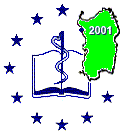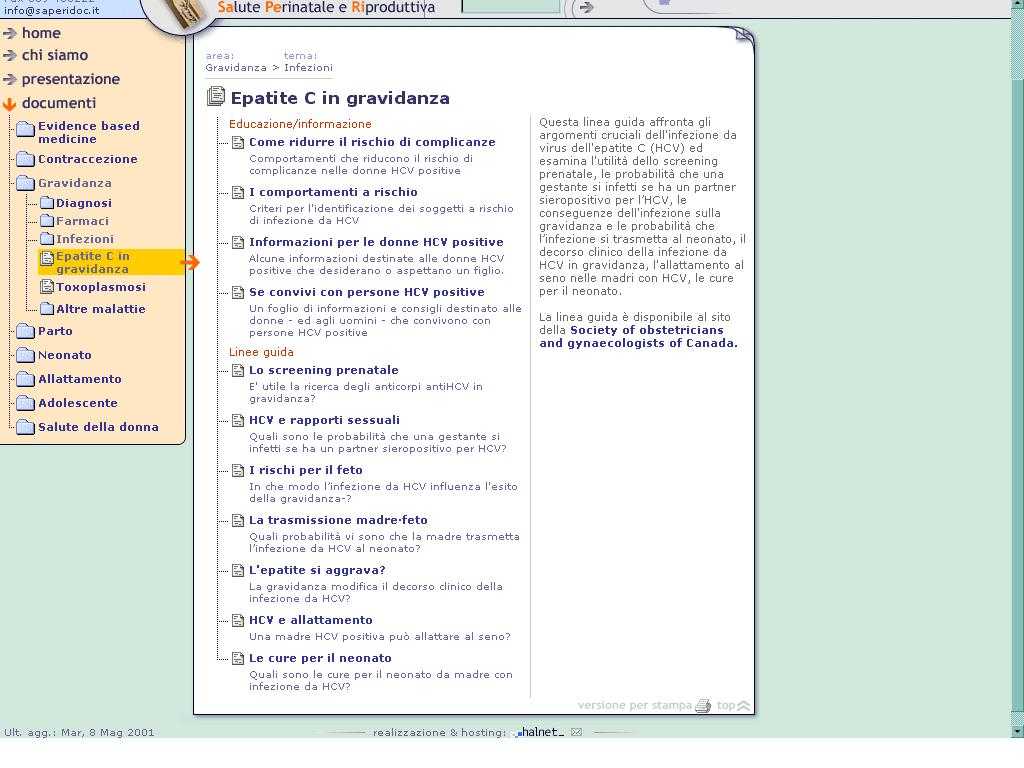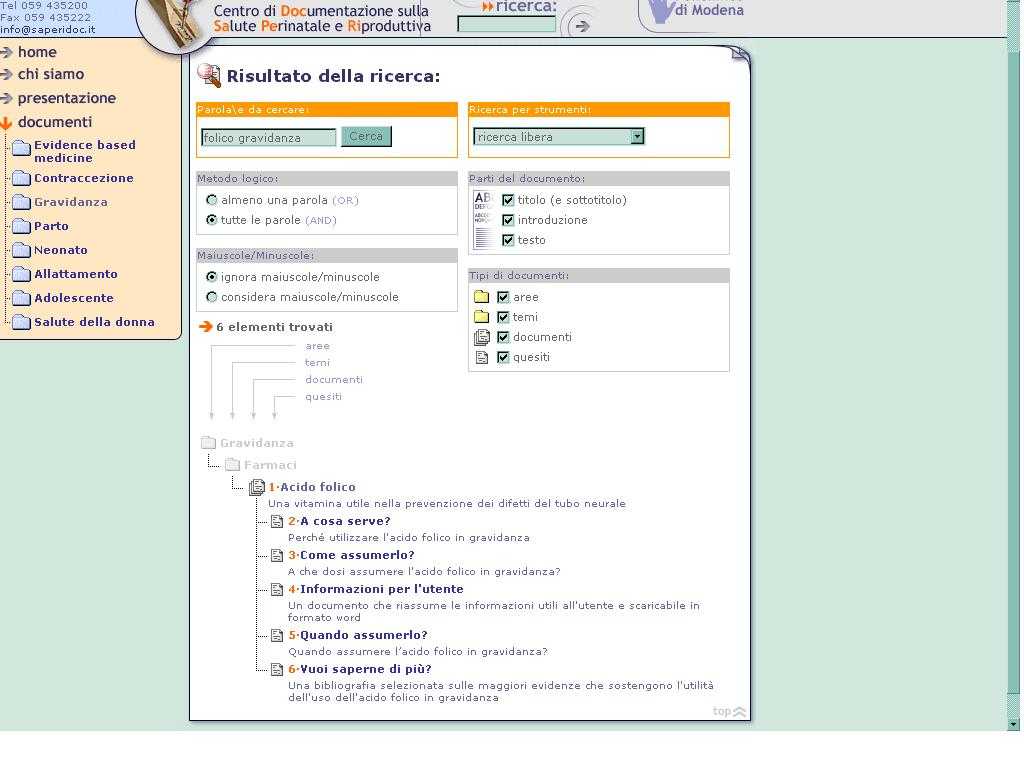 |
Centre for the evaluation
of guidelines and for information on Mother and Child Health.
Antonio Addis, Chiara Bassi, Vittorio
Basevi, Lucia Cutti, Dila Parma, Paola Picco, Maria Dirce Vezzani, Gianfranco
Gori
|
|
|
|
|
|
 |
Background
Public health is a particularly sensitive area within the request for information and updating by clinicians and patients. Leaflets and other information packages have long been seen as part of educational strategies designed to promote health. On the other hand, there is now growing interest in providing guidelines to support treatments, decision and strategies for managing health problems (1). A major challenge of the Italian National Health Service is to ensure that clinical and other decision, relevant to care and prevention of illness and disability for women, mother and children, are based on the best available evidence (2). However, given the paucity of efficacy and safety data on therapy, the production and availability of guidelines regarding mother and child health is not an easy task. The Centre for the evaluation and dissemination of guidelines and for information on mother and child health SaPeRiDoc was established by the Centre for the Evaluation of Effectiveness of Health Care (Ce.V.E.A.S.) as part of a programme involving the prenatal and family planning clinics and supported by Regione Emilia Romagna. The aim of this presentation is to
illustrate the Centre methodology showing how we retrieve, evaluate and
make available guidelines and information packages on mother and child
health.
Objectives The principal objective of the centre is to provide guidelines, information on mother and child health useful for clinicians and patients, available through Internet. We want this material to be: * Available as a tool for continuing educational programme * Based on the best available evidence * Available as an update source of information useful for the decision making in the local clinical practice In particular in line with the Centre for Evidence-Based Child Health dedicated to the dissemination of EBM in mother and child health (3), we want: * to increase the effectiveness and efficiency of child health care by enabling practitioners to apply the best available evidence to their practice; * to promote a common approach in the use of evidence in child health across professional groups working in primary, community and secondary care sectors in their day to day clinical and managerial decisions; * to provide a programme for tutor training and support in promoting this approach in their own workplace; * to undertake studies in order to evaluate the impact of the educational programme on clinicians' skills and on the way their services are organised; * to be part of a network with other
sources of information for the practice of evidence based medicine
Working method A multidisciplinary panel expert group has been established. Starting from specific requests of information from front-line obstetric and gynaecologists, the group developed some clinical questions. These are then exploded in more detailed clinical answerable questions and developed according the best available evidence. For instance, we search internet
throughout all websites that may have guidelines related to the request
of information. After retrieval and a quality assessment, all guidelines
are presented with translation of the contents and with quality and methodological
comments. The same approach is followed for critical appraisal of leaflets
and information packages for patients. All documents are then updated every
six months.
Results In practice, for each single clinical question several tools have been made available: guidelines, systematic review, selected bibliography, frequently asked questions, pamphlets for patients etc. ... All documents are available on Internet
and searchable according to keywords that summarize the original request
of information. In this context a Centre for the evaluations and dissemination
of guidelines results as an ideal meeting point (Figure 1) to select and
to deliver good quality evidence based information for patients and health
operators. Figures 2-4 show the home page of the centre and examples of
how the documents are set up on the web site.
Discussion Even though only providing information may not lead to appropriate changes in the practice of health care professionals, educational materials may have a predisposing effect for change, without being sufficient in themselves to achieve a substantial impact upon practice (4). The quality of information on the Internet is extremely variable, limiting its use as a serious information source (5). However, critical retrieval and analysis of sources for EBM done from an independent health agency dedicated to the evaluation of effectiveness of health care may be a qualified source that should be available on Internet. Furthermore, the summary and presentation in Italian language of guidelines and systematic review usually available only in English may be per se a useful service to overcome the language barrier for health operators in Italy. SaPeRiDoc is part of a more complex
project supported by regional health service of Regione Emilia Romagna
and dedicated to the production, dissemination and implementation of evidence-based
guidelines regarding mother-child health care.
References 1. Coulter A. Evidence based patient
information BMJ 1998;317:225-6
Figure 1. The SaPeRiDoc Centre is the bridge between research and clinical practice fastening front-line obstetricians and gynaecologist request of information, clinical question and evidence based medicine [click on the image to enlarge it]
Figure 2. Home page of the
Centre for the evaluation and dissemination of guidelines and for information
on mother and child health [click on the image to enlarge it]
Figure 3. Map of the site.
All clinical questions are set up in documents organized according to different
areas and themes. The figure shows an example of documents where clinical
questions regarding hepatitis C in pregnancy have been answered through
a recent guideline (summarized and translated in Italian) and information
for patients. Clinical questions may be answered also by systematic reviews,
selected bibliography and other tools[click on the image to enlarge it]
Figure 4. All clinical questions are searchable on the site and the results are showed according to the area and themes which are located in the web site. The figure shows the results for folic acid during pregnancy[click on the image to enlarge it] |
|
|
|
|



